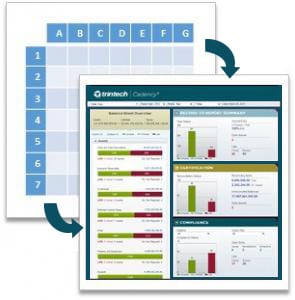What Can We Do Now to Improve Our Financial Processes in 2017?
Blog post
Share
 Research from PwC states that the number one method finance professionals identify in making their finance processes more effective is improving their finance technology. While we obviously can’t ignore the people and the process, the biggest driver for change within these three is often technology. It helps to underpin and enforce standardized processes and enables people to be freed from manual, menial tasks to focus their efforts on higher value activities.
Research from PwC states that the number one method finance professionals identify in making their finance processes more effective is improving their finance technology. While we obviously can’t ignore the people and the process, the biggest driver for change within these three is often technology. It helps to underpin and enforce standardized processes and enables people to be freed from manual, menial tasks to focus their efforts on higher value activities.
Many companies will already be looking at their P2P or O2C processes and the next great opportunity for improvement is the Record to Report, or R2R, process. The R2R process consists of all the sub processes that a company needs to go through to ensure the integrity of the period end numbers. This includes the reconciliations, journal entries, close tasks and activities, and compliance controls.
This is a process that is often very inconsistent, fragmented, manual and repetitive due to the result of years of self-organization, organic growth, mergers and acquisitions, off-shore migration, etc. In nearly all cases, the challenge lies in that the current process results in at best, informal and undocumented business processes and at worst, bottlenecks – single points of failure, reliance on key-irreplaceable personnel and higher degree of risk. These activities are also happening outside of the ERP. APQC has identified that 60% of CFOs believe that their convoluted ERP environment hurts the business by making it hard to access high-quality data fast enough to effectively support decision making.
Couple these challenges with technology that is quick to deliver, easy to use, and delivers high, measurable value to the business and it’s clear why companies are going to market for automation solutions. The benefits are real and measurable. Data provided by the Hackett Group also highlights that best performing companies using R2R automation are genuinely managing this process better and cheaper – closing more quickly, with fewer people and lower cost of delivery.
The reality is that we’re still being asked to do more with less, whether that’s within Shared Services or General Accounting. The close process is a key area where you can manifest this vision relatively simply and achieve benefits quickly. The process can be deployed in as little as 3 months and, in the case of reconciliations, up to 99% of the work can be done automatically, leaving people to focus their efforts on more strategic initiatives for the organization.
For more information, please view our recorded webinar which talks through this in more detail and gives examples of the opportunities for automation improvements, how to gain buy-in for a project internally, how to ensure a successful project delivery, and what metrics you can use to measure success.
Written by: Kelli Shoevlin

